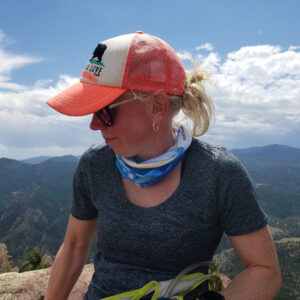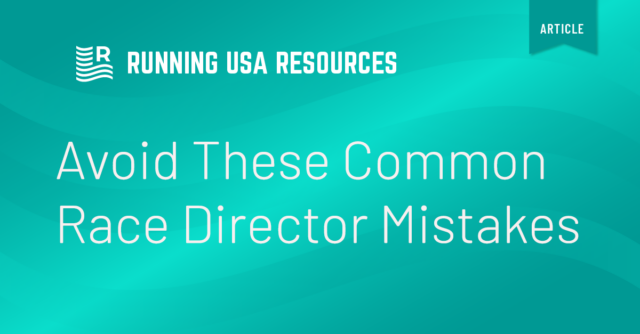By Kelly O’Mara
Race director-ing is hard. Creating a race, managing the operations and logistics and staff, marketing it and communicating with athletes, and building all of that into a sustainable and profitable event (or events) is no small task.
But, fortunately, you can learn from the mistakes (and successes) of those who’ve come before you—and then make your own new mistakes and learn from those
That’s why we asked four experienced race directors what mistakes they made when they were starting out and what are the most common issues they see with new race directors.
Don’t try to do everything yourself
Every single race director said one of their biggest mistakes was just taking on too much. When you first start out, sure, you’re trying to do it all—but as you grow you have to learn to delegate.
“Not only was I making more work for myself, but I was giving the impression I don’t trust my volunteers or members of my staff,” said Geneva Lamm, race director for the Little Rock Marathon.
Matt West, CEO of DMSE Sports uses a “trust but verify” method—as in it’s a mistake to believe that a volunteer who said three months ago they’d help out will just show up without you reminding them at some point since then, but you also need to delegate to your team “because you can’t do it by yourself.”
As you grow, it’s important to create a kind of pyramid, said both West and Heidi Swartz, with the Cowtown Marathon. Look at what you’re best at and what others can do better, then put key staff in the most important jobs and let them delegate and manage their own teams, adding volunteers or part-time staff or contractors depending on your needs.
“Surround yourself with good people with different specialties and experiences,” said John Mortimer, founder of Millennium Running. Someone might be good at marketing, someone at customer service, someone at sponsor contracts, and it can all work together.
Manage your expectations
When new race directors come to Mortimer looking for help, they typically want to start a charity 5K or small local event for a cause. It’s for all the right reasons, but their expectations for that first year are often too big.
“They think there’s going to be 2,000 people at their local 5K,” he said, but that’s probably not realistic for a small first year event.
“They think ‘oh it’s easy,’” said Lamm, but planning a course, getting everything ordered and staffed and permits approved, and making sure athletes actually hear about the event is hard and takes time.
Mortimer recommends giving yourself “a long runway” of 9-12 months. And don’t forget to check the local race calendar to make sure your race doesn’t conflict with some popular existing event, said Lamm, and then market market market. You can’t just assume people will hear about it if you don’t tell them.
Get the details right
There are two critical things in any race, said Mortimer: 1. Athletes have to get to the finish line safely and go the right way on course, and 2. “When they get to the finish, they have to have a time.” You absolutely want to make sure you nail those basics, which includes making sure intersections have staff or police to stop cars and manage traffic. Even if your course is mostly on a bike or pedestrian path, if it crosses a road, then you need traffic control.
After they finish, the next most important thing is to make sure you order enough medals, t-shirts, food, and, of course, port-a-potties. One of the most common mistakes Swartz sees is people simply undercounting on the medal order—or, as an RD, not making a registration cut-off date for your order.
It might take a little time to get that math calculated right—either ordering post-race food for too many people or for too few. Lamm, for instance, eventually realized that the industry standard of 10% DNS (registering, but not showing up) was too high; her race was closer to 6%. That takes some time to learn exactly for your race, but if you’re going to have issues, for instance, t-shirts that will have to be mailed out later or course changes, she said, communicate clearly before the race. “I’d rather take the hit up front,” she said, and then athletes know what to expect.
The COVID caveat
One important thing to note on staffing and ordering right now, a number of race directors mentioned, is that things have changed during the pandemic. Don’t make the mistake of not adjusting to the current reality.
“They’re expecting to come back and pick-up where they left off,” said Mortimer of RDs who took a forced break the last few years—and that’s just not the case.
That means longer lead times on supplies and merchandise. What used to take 10 weeks to order and ship can take 24 weeks now, said Lamm. It means a dip in registrations in many cases, as athletes have been somewhat slow to return to races and typically are not registering as early. And it can mean a harder time staffing, particularly EMS and medical, where much of the qualified medical staff is burned out right now.
Do your own races (and others)
And, of course, don’t forget what it’s like to actually be a participant. When Swartz took over as executive director at the nonprofit that oversees the race, she didn’t realized what exactly the runners in their marquee event were talking about until she did it herself. “It took me starting to run to figure out why they were complaining,” she said. It turned out these small plastic cups they had at the aid stations would crack as soon as you grabbed them and squeezed, and the water would go everywhere. It was the kind of thing you might not notice if you weren’t in the race—but that’s a big deal to racers.
Doing events—both your own and others—as participants and even as volunteers can help you see the actual on-the-ground experience and will make all those small mistakes stand out. (Plus, it’s a good place to get ideas and find potential staff.)
You’re more likely to have a sense of what direction runners walk post-finish and how they navigate aid stations if you actually get out there and try it. And then you’re more likely to have happy runners later.
About the Author
 Kelly O’Mara is the former editor-in-chief of Triathlete Magazine and the founder of the Triathlonish newsletter
Kelly O’Mara is the former editor-in-chief of Triathlete Magazine and the founder of the Triathlonish newsletter

